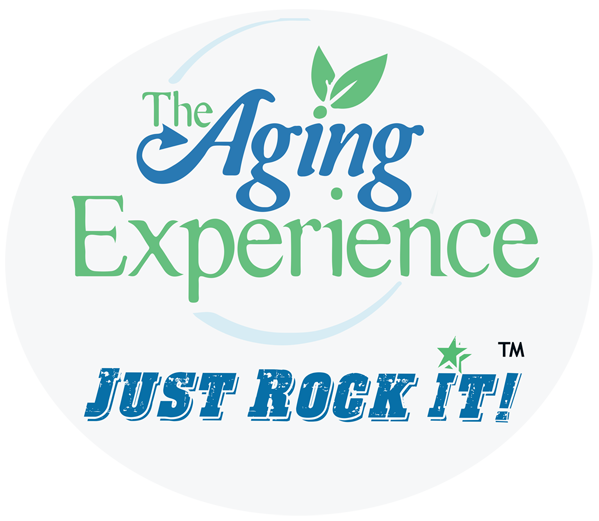Ageism Article
When Ashton Applewhite, the 2016 Aging Influencer of the Year of Next Avenue, recommends someone for your Caregiver Smile Summit to speak about ageism, you take her up on the offer. That person is Cathy Bollinger.
Cathy is the Managing Director of Embracing Aging York County (PA) Community Foundation and heads their long-term initiative, Embracing Aging. At the invitation of Chairman Collins and Ranking Member Casey, Cathy was one of four witnesses selected to present testimony at the United States Senate Special Committee on Aging in May 2017. Clearly, she knows what she is talking about!
What is Ageism?
Ageism is the systemic stereotyping and discrimination of a person based on their age. It is largely unrecognized and unchallenged, according to Cathy. Look no further than birthday celebrations for “older” people. People give us cards with “over the hill” and gravestone images.
Ageism is deeply rooted in our minds, and we develop attitudes toward aging as early as age six. This is based on how we’re raised, the amount of time we spend with older adults, the messages we hear, the type of media we watch, read and listen to in our lives.
The media is great at characterizing people as “old,” “senile,” “set in their ways,” “difficult,” “lonely,” “grumpy,” “victims,” and of course, the big one, “they are not sexual beings.”
Overtime, older adults become viewed as liabilities to a community, not assets. As one of my other Summit speakers shared, this is a time when elders should be treated as mentors and sages and be revered in the community.
“When we have negative attitudes on aging,” says Cathy, “it can shorten our life span.” In fact, people who have positive attitudes toward aging live seven and a half years longer. It’s important as a community that we address these issues.
Unfortunately, these stereotypes can become social truths. When people gather to make decisions about a community, if they come to the table with ageist attitudes, they will not make decisions that are right for all segments of the community.
This group includes politicians, planners, developers, architects and more. If older adults feel they are being cast aside, that can further lead to depression, which can trigger health issues.
Healthcare Providers on the Hook
Healthcare providers can stereotype just like everybody else. It could be because their interaction with older adults is brief and only in a healthcare setting like a hospital or nursing home. It is easy to stereotype people as being in serious decline.
That kind of attitude impacts both the type and the amount of care people receive. Professionals could be mistreating, over-treating or misdiagnosing because of this.
Take the issue of pain, for example. If we are younger and in pain, we go to a doctor and they take it and treat it seriously. If we go to a doctor when we are older and complain of knee pain, they could very well shrug it off and say, “Well, what do you expect? You’re 85!”
Healthcare providers might also put fewer expectations on an older patient for treatment and recovery. Or they may think the improvement does not have to be at the speed of someone who is younger. That could be dangerous because if improvement is not happening, and there is a reason other than aging, they need to look at that.
Providers often weave you into the trap of using terms like honey and sweetie when addressing older people. Talking more slowly or talking loudly, assuming someone can’t comprehend or hear, can also create a stereotype.
In truth, there will be patients that you will have to do this for, but it is not a blanket protocol to apply to everyone. Interestingly, all of this stereotyping helps to dissuade younger people from pursuing careers in geriatrics, labeling it as not sexy, at a time when we need more health professionals than ever.
Caregivers Not Getting Support
Cathy believes that caregivers suffer too in terms of public support, policy support, wages and benefits. Caregivers in the workplace are still stigmatized. Being a caregiver can have real career consequences. Here are three ways to embrace aging.
Stand in Front of the Mirror and Embrace Your Age
Say your real age, and declare that “You are the perfect age for you today!” As you are looking in the mirror, think about this, “My worth is not gauged by what I still do or what I can’t do. It is not measured by what I look like. My worth is based on my whole story, the person that I am.”
Check Your Own Thoughts, Words and Actions
What messages are you sending out about aging? Do you immediately assume things when you meet an older person? Here is a small example.
Often when my friends are forgetful, they say they are having a “senior moment.” What does that imply? Why not just say, “I’m having a forgetful moment”? Another thing we say to people is, “You look great for your age.” Why not “You look great”? Period.
Get Out in the Community and Dispel the Myths
Speak up when you hear something. Listen to what people are saying. Listen to the stories of older adults. Monitor what the media says on aging and call them out when necessary. Talk about aging. And really be mindful of how the narrative is going around the country.
For example, the growth of boomers’ business opportunity is often referred to as a Silver Tsunami. A tsunami is not a positive image.
If you want to learn more about ageism, aging consciously and becoming a conscious caregiver, consider registering for my Caregiver Smile Summit where we have 51 world-renowned experts covering 53 topics to help make your life better.
How have you experienced ageism personally? How do you experience and combat ageism in your community, by your health providers and employers? Please share your thoughts below!

